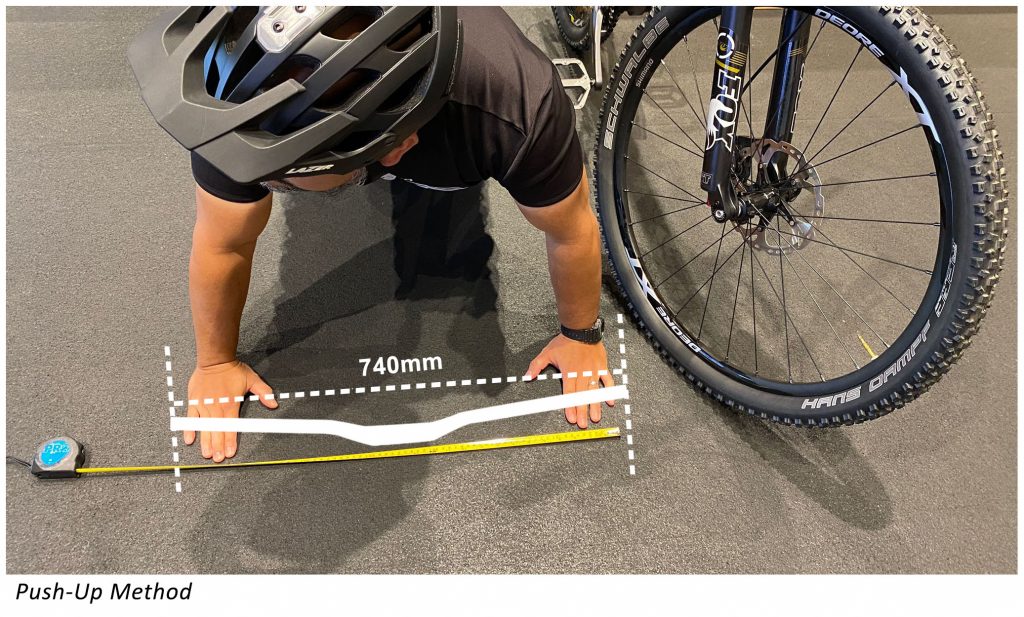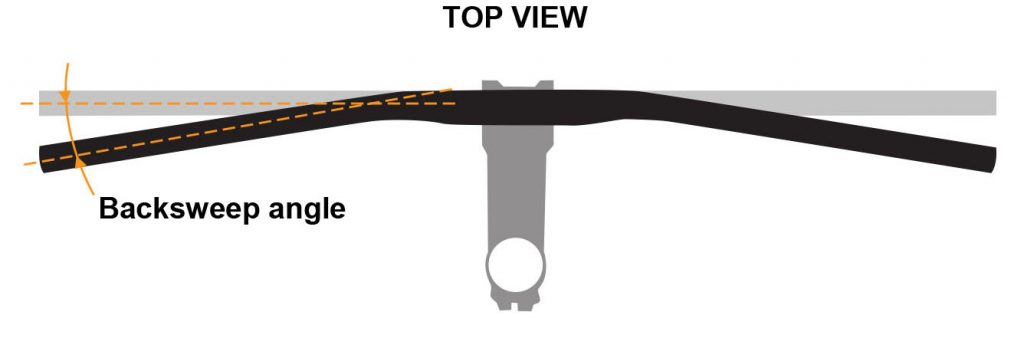Selecting The Right Handlebar – Mountain Bike
MTB handlebars come in various shapes and sizes, and selecting the right bar for your riding style can really provide optimum control and comfort. We hope this article will help you to identify the ideal handlebar fitting aspects and how they can make your ride enjoyable.
Handlebar Width Measurement
Just like the Road bike, Mountain bike handlebar width is equally important as this will determine riders’ optimum performance. Mountain biking has a few disciplines such as Cross-Country (XC), Downhill (DH), Enduro, etc. and each of these disciplines requires precision measurement to avoid potential injuries.
One of the easiest and most effective ways to measure is the push-up method. Position yourself in the push-up position and find the most comfortable width. Measure the optimum width from palm to palm and that will provide you the width of your handlebar. The objective is comfort, leverage and control.
Recent trend in mountain biking is that wider bars are better, the idea being is they provide more leverage and control. If the bars are too wide, your body position and comfort on the bike may be compromised.
Shapes (Backsweep, Upsweep and Rise)
When it comes to picking the best bar shape, it is helpful to have a basic understanding of mountain bike handlebar geometry. Bars are shaped to make your hand position more comfortable and to help increase control of the bike. The shape of a bar can be described in three ways: Backsweep, Upsweep, and Rise.
Backsweep describes how much the handlebar angle bends back along the horizontal plane toward the rider to ensure more comfortable in the wrist/hand alignment. The average bar has angle measures between 7° and 9° of backsweep.
Upsweep is the angle at which the bar turns upward from the flatter middle section of the handlebar. Most bars fall between 7° and 9°. This tends to provide a good, neutral wrist angle for riders. More upsweep angle provides a feeling of being more supportive in rough descends.
Rise of the handlebars is the actual measurement of how high above the stem the ends of the handlebar sit. Common measurements generally are in the 40-50mm range. High-rise bars are commonly set up on downhill bikes. Since they are optimized for riding downhill, this allows the bikes for better control on the descents.
Handlebar Materials
MTB handlebars are commonly made from either carbon or aluminium.
Carbon bars cost more to produce and are generally less robust when compare to aluminium. However, they are lightweight and they do a better job in absorbing vibrations from trail irregularities to reduce fatigue for the arms. On contrary, aluminium bars cost lesser, are relatively light and yet durable. Therefore, they can withstand better the rough and tumble of the uneven trails.
In conclusion, a lot of what makes a handlebar the right choice boils down to personal preference and demands. Ultimately, the best way to find out which is the best handlebar is by trying out different designs and styles.
Ride safe!
————————————————————————————————————————————————————————————————————————————-
Published by Dicky Hamid, January 2022






